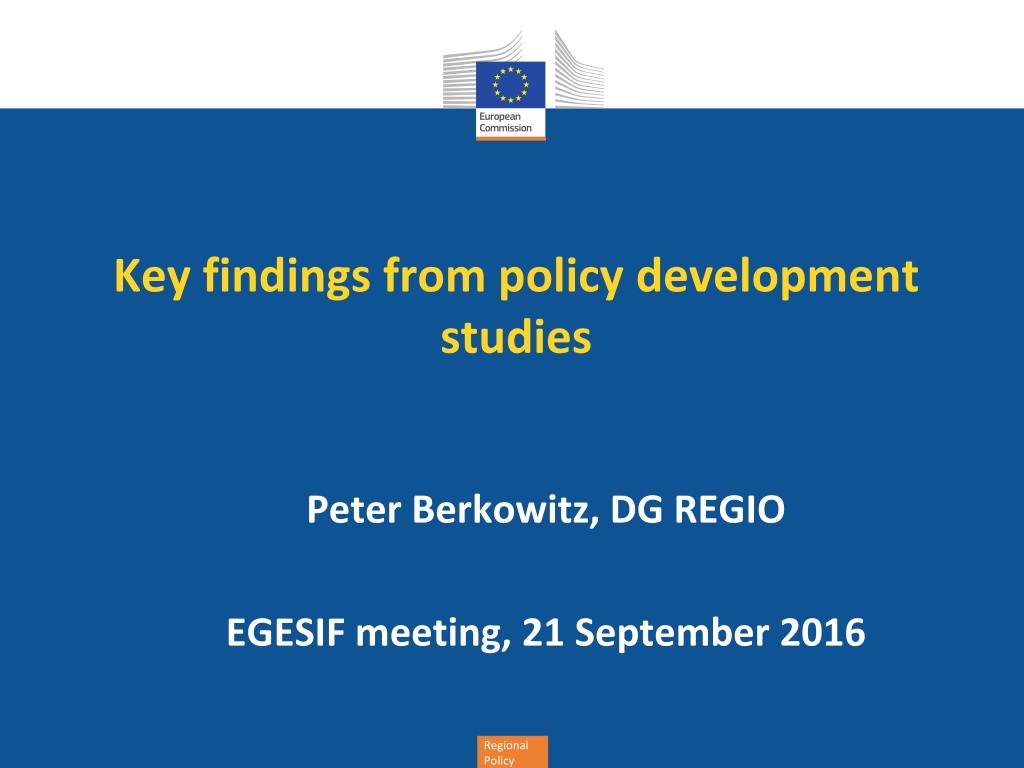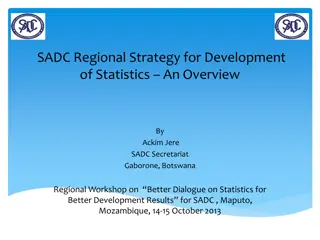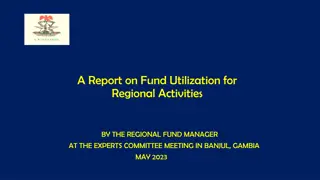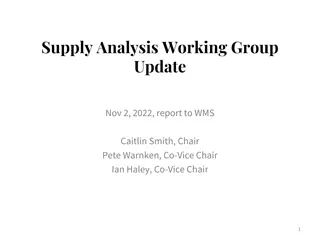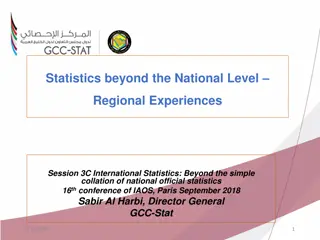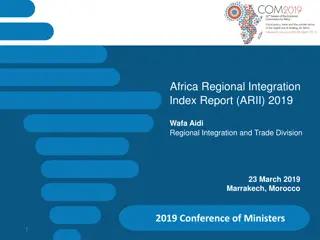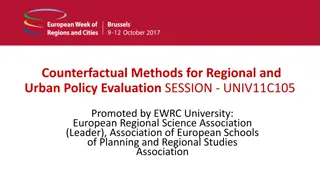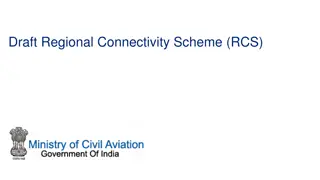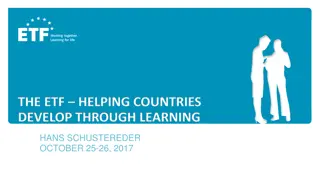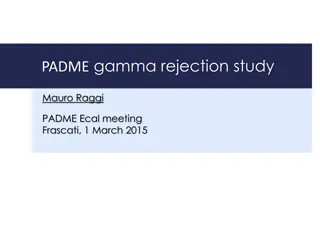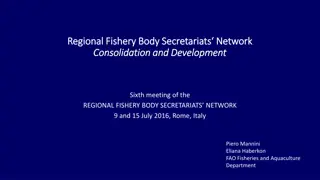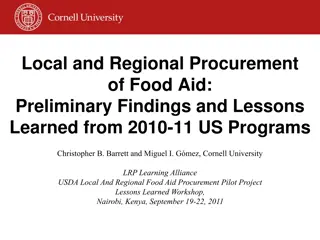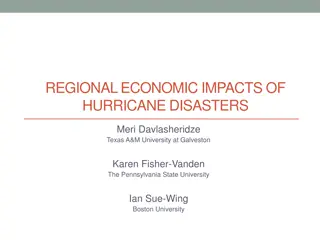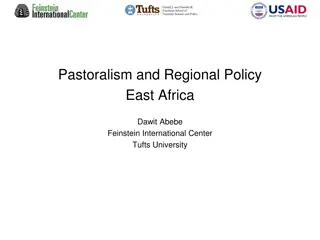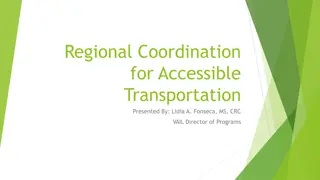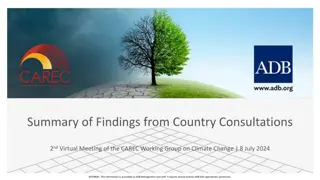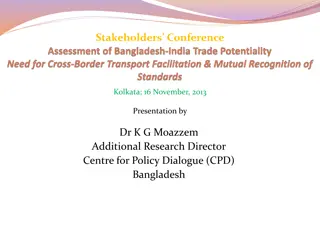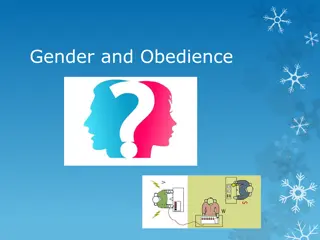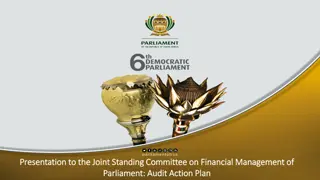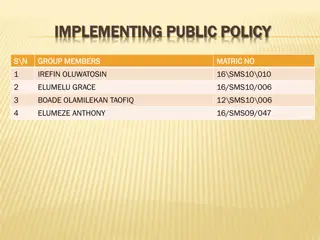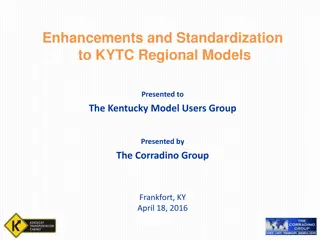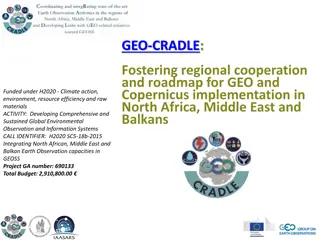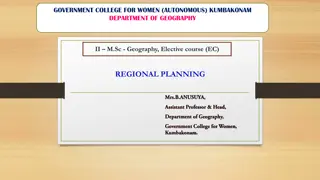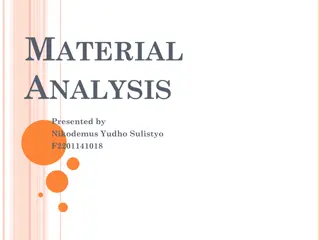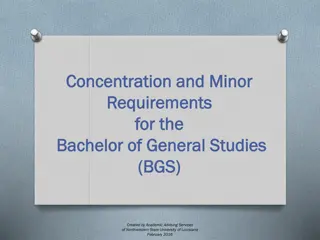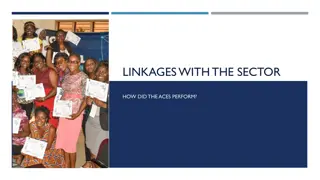Key Findings from Policy Development Studies - Regional Policy Analysis
Studies led by Peter Berkowitz at the DG REGIO EGESIF meeting in September 2016 focused on key findings related to policy development, program implementation, and the impact of various mechanisms in regional policies. The methodological approach included desk studies, web-based surveys, and structured interviews to assess the performance framework, new provisions, and ex-ante conditionalities. The performance framework findings highlighted the benefits and challenges of setting milestones, indicators, and targets for program direction and monitoring.
Download Presentation

Please find below an Image/Link to download the presentation.
The content on the website is provided AS IS for your information and personal use only. It may not be sold, licensed, or shared on other websites without obtaining consent from the author. Download presentation by click this link. If you encounter any issues during the download, it is possible that the publisher has removed the file from their server.
E N D
Presentation Transcript
Key findings from policy development studies Peter Berkowitz, DG REGIO EGESIF meeting, 21 September 2016 Regional Policy
11 Studies launched 4 studies ("new provisions", ex ante conditionalities, performance framework, partnership principle) 1. Analyse 2014-2020 programming phase 2. Assess the impacts and effects of the thresholds and limits introduced in the CPR Study on "thresholds and limits" (setting up a database of 2007-2013 operations) 3. Analyse 2014-2020 programme implementation and options to feed into the impact assessment 6 studies (simplification, financial instruments, coordination and harmonisation, alternative delivery mechanisms, feasibility study on budget support, country specific recommendations ) Regional Policy
Methodological approach Desk studies of all PAs and ERDF/CF programmes, including cooperation and multi-fund programmes co-financed by the ESF Web-based surveys to all Managing Authorities Structured interviews of key actors at national/regional levels Shared with MS: draft final reports of studies on performance framework, ex- ante conditionalities, "new provisions" Presentation is highly synthetic considerable diversity at MS level 3 Regional Policy
Performance framework Key findings (1) Performance frameworks perceived as beneficial for a stronger result orientation and direction of programmes The development of the performance frameworks has generated considerable debate and exchanges Member States have made efforts to establish the performance framework on a solid basis The choice of indicators for milestones and targets was in line with Commission guidance Setting milestones and indicators was mainly a straightforward task 4 Regional Policy .
Performance framework Key findings (2) Strengths: Better steering and guiding of programme implementation; more realistic definition of targets and expectations, increased focus Need to establish a performance framework has triggered reflections and discussions on the setting of objectives, monitoring of progress and on the implementation of an increased focus on results within Member States and with the Commission Weaknesses Risk of conservative target setting Balance between shorter-term output-based indicators, milestones etc. on the one hand, and the drive for long-term results, supported by evaluation and policy learning 5 Regional Policy
Performance framework Main benefits of performance framework 40% What do you see as the main benefit of the performance framework? 35% 30% 25% 20% 15% 10% 5% 0% It will help to better guide the programme during implementation It helped define realistic targets&expectations It helped focus the programme No benefit Other 6 Regional Policy
Performance framework Did you have particular difficulty with establishing a methodology and criteria to select indicators for the performance framework? 7 Regional Policy
Ex-ante conditionalities Key findings (1) Ex-ante conditionalities (ExAC) have proved highly relevant for programming of ESI Funds; A learning process for all stakeholders involved; Very ambitious in terms of strategic reform for many Member States and for their cooperation with the EC; The process was considered lengthy; at the same time more time would be needed in order to ensure higher quality deliverables; Guidance material provided by the Commission was very much appreciated. 8 Regional Policy
Ex-ante conditionalities Key findings (2) Strengths: Process increased awareness in MS about the necessary pre- conditions for effective implementation of public investments and addressed shortcomings in these. Increased cooperation between the national and regional level in the MS but also between the MS and the Commission. Improvements in the investment framework already occurred during the programming process. A considerable amount of conditionalities were fulfilled between the adoption of the PA and the OPs. Weaknesses: Considerable resource implications; the effort for fulfilling ExAC was considered high and sometimes disproportionate by certain more developed MS. 9 Regional Policy
Ex-ante conditionalities Frequency of the applicable thematic ex ante conditionalities in OPs 10 Regional Policy
Partnership Key findings (1) Partnership improved in the 2014-2020 ESIF period as compared to previous programming periods. The partnership principle is implemented very differently across the EU. Implementation depends on national administrative structures and cultures, technical and financial capacity of partners and political environment. Positive contribution of The Code of Conduct - by clarifying the role of partnerships and the application of the partnership principle. Working in partnership is generally perceived as a benefit. Partnerships appear as generally balanced with some cases of discrepancy between the actual and the perceived representation of certain partner group (example: local authorities). 11 Regional Policy
Partnership Key findings (2) Countries that joined in or after 2004 have more often established new partnerships compared to countries that joined before 2004. A wide range of participation processes exists, depending on the target group (e.g. broad public consultations, targeted consultation, thematic seminars). Almost all programmes have planned actions to involve partners during the implementation process (mainly through committees). The informal dialogue with the Commission was perceived as more useful in the context of programmes rather than PAs. Challenges do persist, the most important being the mobilisation of partners. 12 Regional Policy
Partnership Involvement of partners in the drafting process of programmes 13 Regional Policy
New provisions Key findings (1) PA and OP have been substantially aligned with the priorities of the Europe 2020 strategy and CSRs. Explicit references in programmes representing 58% of Cohesion Policy budget. Substantial degree of concentration of ERDF and the Cohesion Fund on key thematic objectives. New provisions have altered the approach to programming, towards thinking in terms of a hierarchy of objectives and results. The identification of result indicators was difficult, but overall the objectives and results are found well defined. 14 Regional Policy
New provisions Key findings (2) Over 40% of Cohesion Policy budget implemented through combined priority axes. May help to achieve synergies between programmes or regions, but also complicate programme structures. Justifications provided for the use of combined priority axes were often missing or poor. Share of financial instruments is planned to increase in comparison to previous programming period, although new provisions on FI perceived as complex and received with caution. New territorial instruments, especially ITI and SUD, considered as useful tools to address complex cross-sectorial challenges in a territorial context; uptake in OPs is good. MS cautious about the delegation of functions to sub-national actors. 15 Regional Policy
New provisions Key findings (3) New provisions related to management (funds co-ordination, capacity building, reduction of administrative burdens, electronic administration) well received by the Member States and well complied with in the programming documents, which provides a good basis for developing implementation capacity. In the programming process, the largest initial differences between the Commission and managing authorities concerned result indicators and specific objectives, the selection of actions to be supported and the use of combination axes. 16 Regional Policy
New provisions Complex priority axes by thematic objectives, % of total 17 Regional Policy
New provisions Impact of exchanges with the Commission in the negotiations of PA and OP 18 Regional Policy
Thresholds 2007 - 2013 Key findings (1) Project size: The average total cost per operation varies significantly by Member State. From Spain (EUR 59,488) and Greece (EUR 101,373) to Slovakia (3.68 million) and Cyprus (EUR 5.77 Million). EU average is EUR 1.21 Million Priority themes Highest number of operations in "research, development and innovation" (57%) and information society (12%) Operations with the highest total cost in priority themes "research, development and innovation" (37%), "transport" (20%) and "environment protection and risk prevention" (14%). 19 Regional Policy
Cumulative estimated distribution of operations by number Cumulative estimated distribution of operations by total cost 20 Regional Policy
Links to studies on InfoREGIO http://ec.europa.eu/regional_policy/en/policy/how/improving- investment/studies_integration/ 21 Regional Policy
Thank you! Regional Policy
